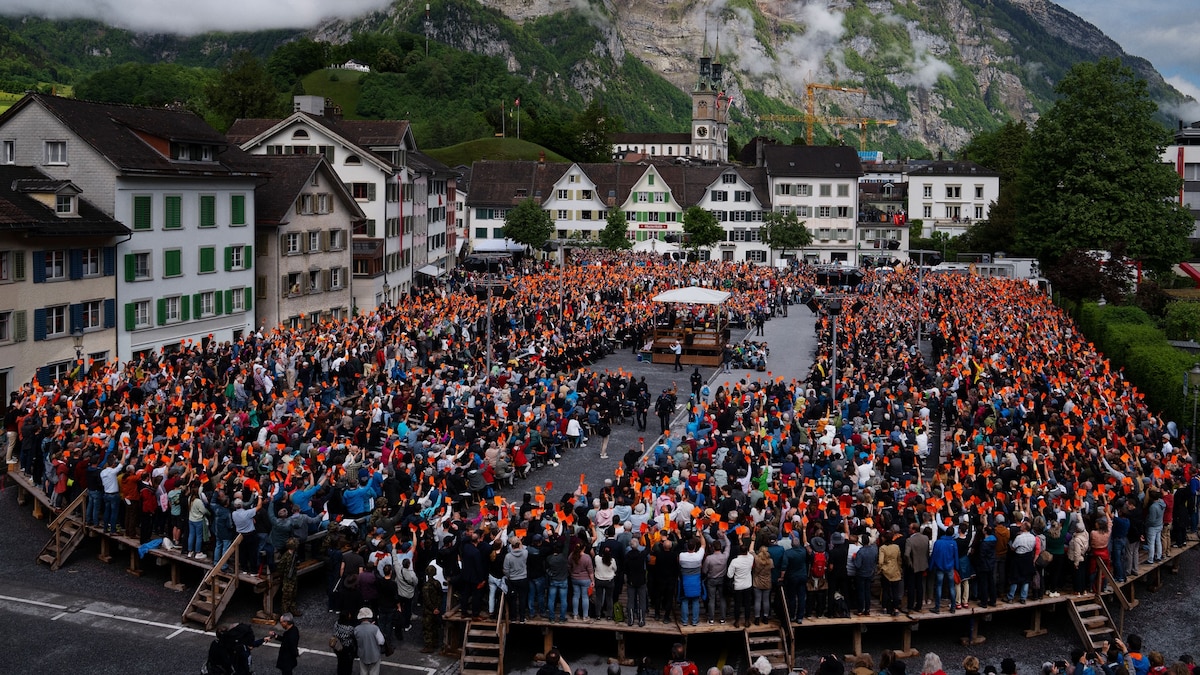Now Reading: Why this photographer made a camera lens out of glacial ice
-
01
Why this photographer made a camera lens out of glacial ice
Why this photographer made a camera lens out of glacial ice

Photographs byTristan Duke
Text byMeaghen Brown
Glacial ice is formed from snow accumulating and compacting over millennia. As the pressure increases, crystalline layers are smoothed into one of the clearest substances found in nature. That alchemy—and the knowledge that climate change is causing glaciers to rapidly disappear—inspired 44-year-old artist Tristan Duke to create a photo lens out of glacial ice. “I just felt this real sense of urgency,” Duke says. He wanted to capture a glacier through its own “eye,” as he puts it, like a self-portrait.
In the spring of 2022, Duke hauled hundreds of pounds of gear to Svalbard, Norway, including a giant tent camera that he designed himself and molds for shaping the ice into lenses. The tent functioned like a camera obscura: Duke would place a palm-size piece of ice in a hole in the canvas, projecting an image of the landscape inside the tent that would then be captured on a 42-by-100-inch negative.
Some of the photographs were clearer than he expected, but as the lenses melted, the accumulation of water produced its own effect. “People have told me that it looks like the world blurred through tears,” he says.
To contrast this Arctic sublime against a world on fire, he traveled through the American West to document wildfires and energy infrastructure with lenses created from locally sourced ice. He wants to invert the romantic gaze. “We see a sort of fragile nature bearing witness to the unbridled and cataclysmic power of the human world.”

Duke gathered ice from around Dahlbreen and other glaciers, and then molded it into lenses that he used to create quasi self-portraits of the Arctic landscape.

He and his crew, some of whom he photographed aboard a small Zodiac skiff, faced numerous challenges, including adverse weather, lost luggage, and a bout of COVID-19.


Glaciers cleave into bergs when they meet the sea, revealing fragments of clear ice that had previously been compacted beneath layers of snow. Duke crafted his lenses from these fragments. To protect himself and his camera equipment from the harsh Arctic environment, he constructed a collapsible camera tent (above right and below).


After he returned from the Arctic, Duke photographed New Mexico’s Pecos Wilderness after the Calf Canyon/Hermit’s Peak fire using an ice lens made from tap water mounted in front of a digital camera. As the lens melted, the camera’s focal length changed, revealing new details in each shot.

Using ice sourced in Los Angeles, Duke set out to document the slow migration to clean energy. He photographed aging oil and natural gas infrastructure, like these pumpjacks at Placerita Oil Field in Southern California (above), and fields of wind turbines (below) built along California’s Tehachapi Pass.

A version of this story appears in the July 2025 issue of National Geographic magazine.























